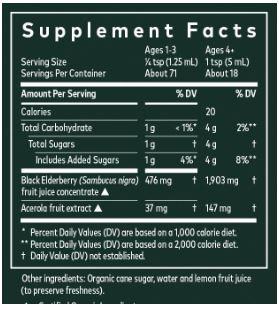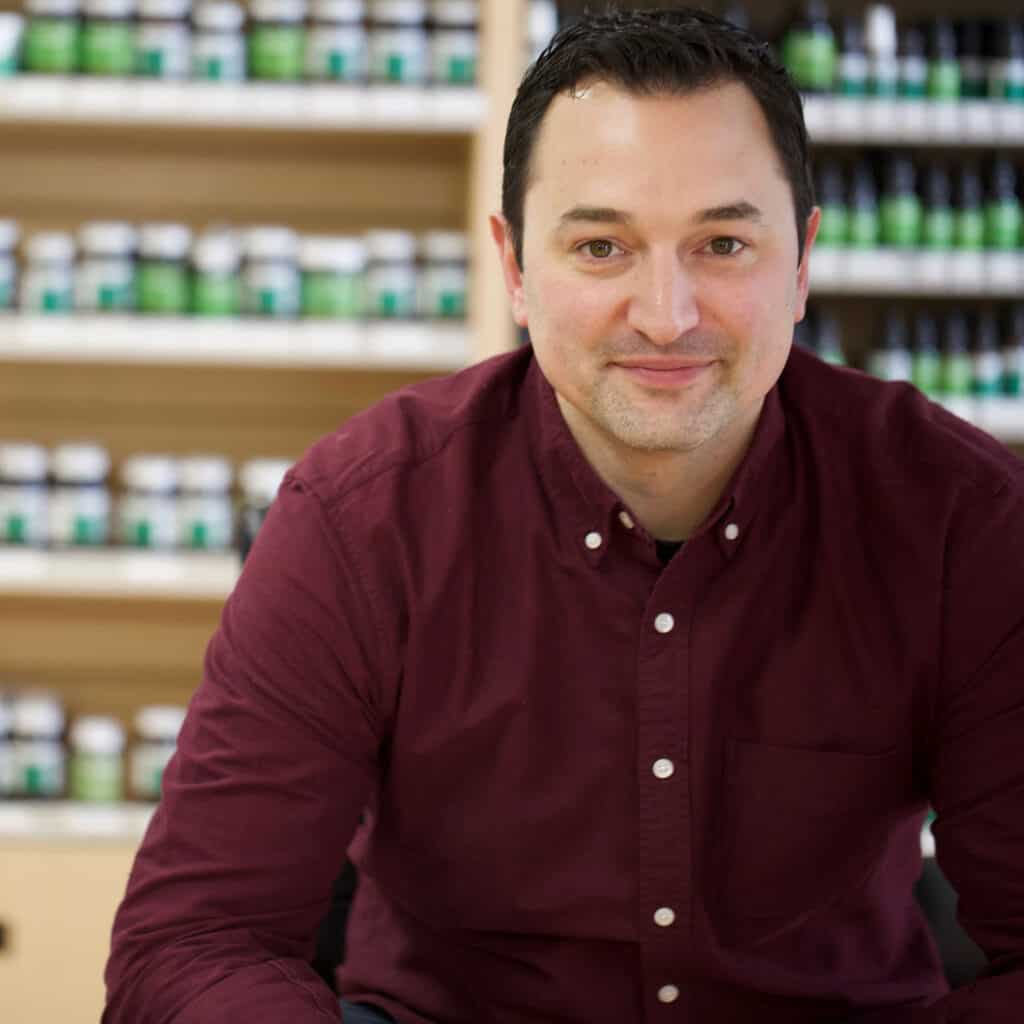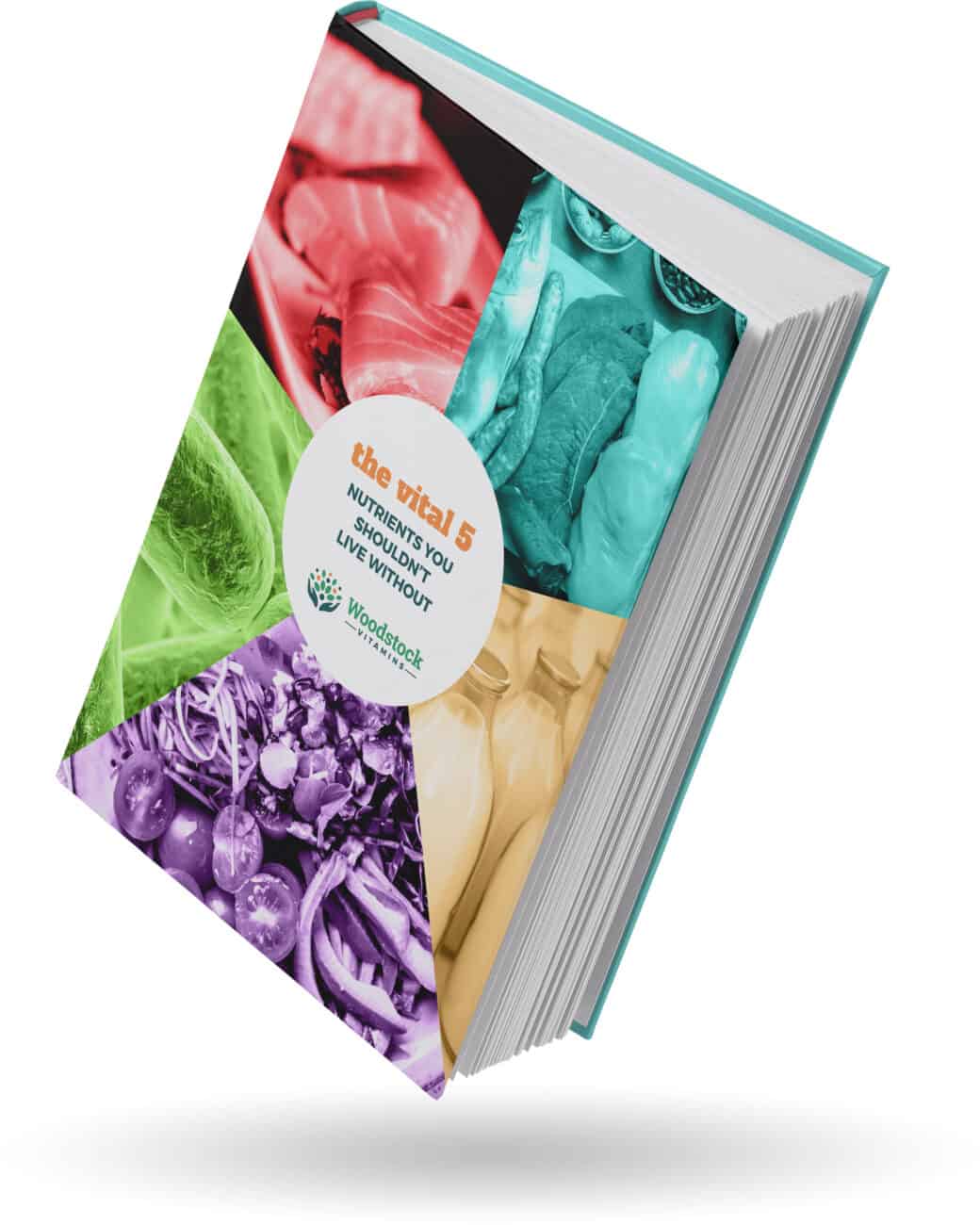With cough and cold season in full swing, it’s time we take a deep dive into an age-old winter-time companion, elderberry.
In a break from the norm, we’ll attack this in a fun, modern listicle format. Just like all those really popular blogs that we always said we wouldn’t emulate. The kids want it, so we’ll give. Here are 15 fun facts about elderberry.
1. Black elderberry is our jam.
Elderberries grow in different regions of the world. The contents – and colors – vary. Here’s the simple version of how they break down:
- Red elderberry from China
- Blue elderberry from the Rocky Mountains and Mexico
- Black elderberry from Europe and the Americas.
The one with the highest amounts of immune-supporting compounds is Sambucus nigra, known as black elderberry or Sambucus.
2. People have been eating pretty much all of the plant since the stone age.
At Woodstock Vitamins, we know that just because something’s been done for a while in a certain way, that doesn’t automatically make it good. We use folk medicine as a general guide, but we don’t hang our hat on it. We live in the modern age and we need modern evidence.
Regardless of my perspective and occupancy of a soapbox, there’s wisdom gained from the traditional use of every scrap of an elderberry plant.
Traditionally, each part of the plant has its own set of uses:
- Berries – antioxidant and immune support
- Flowers – antioxidant and immune support, but also as a diuretic, laxative, or diaphoretic (helps you sweat)
- Bark – diuretic, laxative, and to induce vomiting.
Trial and error over centuries taught us what each part of elderberry can do. We also learned quickly that elderberry has a teeny, tiny liability…
3. Elderberry will KILL you!
Technically, elderberry is a murderer.
Elderberries, specifically the unripe fruits, leaves, and stems are rich in a compound called cyanogenic glycosides. This compound, when metabolized, is converted into cyanide. Unless you want to go out like a spy, I would try to avoid this compound.
This compound is quickly destroyed when elderberries are cooked prior to ingestion or processing for supplements. Only eat cooked elderberries.
Bark and stems will help induce nausea because of the irritating effect from the poisons!
4. Elderberry is a superfood (when it’s not lethal).
I’m not a fan of the word superfood. In reality, there’s food and the garbage most of us eat. It could be said that some are extra nutritious, like cooked elderberries and, as we learned in our podcast The Currant Situation, real American made currants.
Elderberries are rich in the following compounds:
- Antioxidants
- Bioflavonoids like quercetin, glycosides, and rutin
- Vitamins and minerals like vitamin C, B6, and iron
- Other ingredients
5. Elderberry does actually work.
When I say work, I mean that there seems to be some evidence that backs up the claims made about elderberry.
Elderberry has traditionally been used due to its anti-viral properties, for symptoms associated with influenza, colds, and even herpes!
Most would rate the evidence poor to moderate, but in the supplement industry we’ll take moderate!
In a few, small, and recent studies, people who took concentrated elderberry preparations at the onset of diagnosed flu symptoms had a significant reduction in symptoms and duration of the illness.
The mechanism is complicated and I’m trying to be less nerdy, but it directly inhibits influenza virus.
There’s been some use around colds and even mentions of it helping reduce cold sore flare-ups. There’s not a lot to write home about data-wise, but it could be worth an experiment! Talk with your healthcare practitioner for specifics.
6. But elderberry isn’t a miracle product.
There are many claims that I believe are unsubstantiated. Even with it’s anti-flu activity, some people go too far and say it can be used as a vaccine substitute. No. Just no.
In our Heart Healthy Supplements blog, I stressed that the cardiovascular system is quite complex. Most botanical products and “experts” take a reductionist approach to it, recommending herbs for blood pressure or, as in the case of elderberry, as a diuretic.
While it may have those properties, affecting the fluid balance or vascular tone of the body in a carte-blanche kind of way can have repercussions to the natural “balance” of the complex system of pumps, fluids, and tubes.
Elderberry should not be consumed to help with cholesterol, despite what a blog may say.
7. At worst, it’s a great antioxidant.
I’m not an advocate of people micromanaging micronutrients. In Anti-Your-Oxidants, we said that the antioxidant claim some supplements make is way overstated.
In general, you should eat lots of varied, dark, beautifully colored foods.
Adding a teaspoonful of elderberry to your weekly or even daily routine will give you a little push
8. Elderberry seems to be more for treatment than prevention.
Based on the few small studies we have, we can see that the high doses of elderberry at the onset of symptoms helps people recover faster.
Most people, though, want to take it every single day in the winter. I’m not opposed to that at all. I just don’t think it will help you not get sick during cough and cold season. Check out my cold recommendations in our blog or in our cool one-pager.
A teaspoonful daily may be a good addition to an already varied diet, as you’ll be getting a big dose of a healthy berry (that’s free of cyanide because it’s been cooked!).
9. Elderberry syrup and supplements have a boatload of elderberries per dose.
Well-made elderberry preparations will have the equivalent of 5-15 grams of whole elderberry per teaspoonful.
If we estimate an elderberry at one-half gram each, that means you’re getting 10-30 berries or more worth of nutrition.
10. Elderberry is naturally low in sugar.
All that fruit jammed into a supplement bottle that’s referred to as a ‘syrup’… You’d think you’re in for as much sugar as a Pepsi.
In reality, elderberry is low in simple sugars. As a result, the taste is quite tart and not for the faint of heart.
In supplement reality, yeah, you’re getting way too much sugar. Gaia Herb’s product, for example, has 4g of added sugar per teaspoon.
It’s a good product, but jammed with sugar to cover up the nasty/unique taste.
Our elderberry syrup, on the other hand, has no added sugar:

11. You have to be aware of elderberry dose if supplementing.
Dose matters when it comes to any medicine, including supplements. To get all the health benefits of elderberry, we need to get the right dose.
Clinical trials are mostly done on Sambucol, a specific brand that claims it has unique extract technology and a specific amount (38%) of elderberry extract.
Combing through the trash heap of literature, I’ve found varying amounts, sources, and preparations of elderberry used.
Do you HAVE to use Sambucol? Probably not. Just make sure you know that you’re getting a hefty dose of real elderberries.
12. It’s confusing to know what you’re getting when you buy elderberry supplements.
A quick scan of different Supplement Facts Panels shows that everyone’s a free thinker in the elderberry supplement space.
I’ve seen all of these listed as the main ingredient: “Organic Elderberry,” “Elderberry extract,” “Elderberry extract powder,” “Elderberry concentrate powder,” “Elderberry juice concentrate.” It goes on and on.
What’s what?
You can get 1 of 3 main types of elderberry ingredients in your supplement:
- Whole berry – The whole elderberry is mashed, mixed, then dehydrated to remove the water.
- Extracts – The berry is mashed and mixed, then solvents are added to “pull out” the healthful compounds. Extracts can then be further dehydrated to make extract powders.
- Juice concentrates – The elderberry is juiced (separated from the skins), then the water is gently removed to make a mushy concentrate. Some will dehydrate this further, creating a juice concentrate powder.
Which one is better? Great question. It seems that juice concentrates are the most, well, concentrated form of elderberry. One elderberry farm I interviewed had some math they’ve done before:
1 teaspoon = 21.8 grams of berries = 15.2 g of juice = 5.2 g of juice concentrate.
Gaia’s product is 14.5 g of berries which yields about 2 g of concentrate.
Shoot for high amounts of elderberry per teaspoon, but know the relative size order of the different types of elderberry.
13. Capsules, and lozenges, and syrups… Oh My!
If berry vs. juice concentrate wasn’t confusing enough, you have options on what dosage form your elderberry will come in.
Capsules, tablets, gummies and lozenges will have less elderberry per unit than syrups simply because those things are smaller than a teaspoon of liquid. To benefit from elderberry, we need high doses, which means you’ll need lots of capsules to be equivalent to what you can get in a concentrated teaspoonful.
14. Quality of your elderberry supplement matters.
Getting past the general confusion about the type of extract and dosage form, we have a number of quality concerns. Elderberry is an herb, and herbs carry a big risk of contamination or being adulterated.
Improper processing will result in some low-grade toxicity or real harm if the CYANO aren’t fully removed.
Like with Saw Palmetto, there are numerous corners that can be cut to improve margins. Using unripe elderberries or diluting down the real elderberry count by adding in non-Sambucus nigra species to the batch is an issue.
Many extract powders are made by spray drying, which is a high heat process that will degrade the beneficial compounds.
Herbicides, pesticides, and extraction solvents (like hexane!) could accumulate easily as elderberry is so concentrated.
Elderberry goes bad quickly and can’t be stored after picking for very long. We want suppliers and farms that take it from bushel to extract as soon as possible.
15. Kids COULD use it, but be careful.
There isn’t a lot of data for use in kids. In general, kids aged 1-3 should use no more than ¼ of an adult-strength elderberry, or put another way, they should use less than 500mg of concentrate. Anyone 4 and up could take the full dose of elderberry.
As always, consult an expert for specific cases and how long someone should be using elderberry on the regular.
Elderberry syrup is awesome. So is ours.
To summarize my points above, here’s the mini-list of the listicle article:
- Elderberry, when made correctly, can support symptoms of flu.
- Take elderberry daily as a healthy antioxidant-rich fruit, but not to stop you from getting sick.
- Always look for the highest amounts of elderberry per teaspoon for the best effect.
- Elderberry is low in sugar; avoid products that could rival a soda’s sugar content.
- It’s tart, so beware. Mix it with any liquid and down the hatch.
- And finally, don’t forget to shake your elderberry well before use.
I try not to be a used car salesman when I’m writing our educational material, but I think I can make an exception here.
Our elderberry syrup is 6 grams of organic berry per teaspoonful. No added sugar. Just elderberry, glycerin (used to make the syrup mix well), and water. It’s pretty inexpensive for a high-quality supplement, too.
No matter what, elderberry is a great addition to your cough and cold season survival kit.
Just trying to keep it real…

Neal Smoller, PharmD
Owner, Pharmacist, Big Mouth



